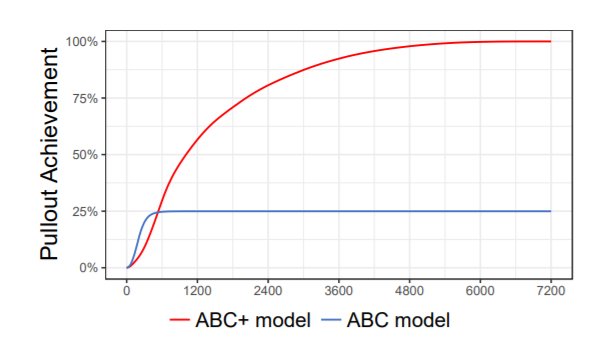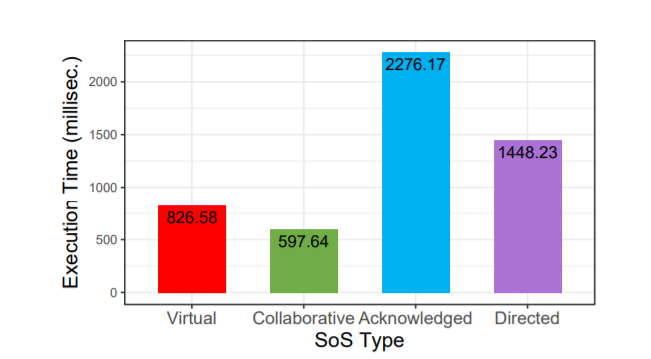Background
Seo et al. organized the characteristics of four SoS types (i.e., directed, acknowledged, collaborative, and virtual) which are originally proposed by Maier and later modified by Dahmann et al.. In directed SoS, an SoS-level manager has full authority on CSs, and manages them to achieve SoS-level goals while they still operate independently. For example, when a national disaster occurs, the control tower acts as the SoS manager and manages various resources such as firefighters, ambulances, hospitals, etc. SoS manager in acknowledged SoS request CSs to cooperate by proposing various inducements. This type can be matched a case of middle-level disasters. In collaborative SoS, CSs have agreements on SoS-level goals without a SoS manager. Lastly, a virtual SoS refers to a situation where there is neither SoS manager nor agreed SoS-level goals. To help readers understand, we bring a simple but intuitive SoS scenario called the Mass Casualty Incident (MCI) response scenario. We suppose a big explosion occurred and buildings are broken down, where people are trapped. Firefighters (i.e., CSs) are dispatched, and each has the ability to search for trapped people and pull out them. Since all firefighters try to pull out as many as possible, the independent firefighters may collaborate. It exemplifies a collaborative SoS. Meanwhile, a government agency may set up a control tower (i.e., SoS manager) for more effective and efficient control. The control tower may make just inducements in an acknowledged SoS or commands in a directed SoS.
Overall Approach/Method
1. Knowledge-based Decision-making model
To solve the limitation that each entity model has no way to remember its history, we attempt to introduce a knowledge base for each entity such as CS or SoS manager. The knowledge base is widely used to simulate the decision-making mechanism of human beings in computer systems. Instead of using the fixed cost-benefit table given by domain experts, ABC+ lets entities autonomously build their own independent knowledge, which is used in cost-benefit analysis. Also, we define the three phases of one’s decision-making mechanism. The detailed description of them is as follows.
Figure: Overview of Knowledge-based Decision Making of CS
Phase 1: Knowledge update. An entity use available information for decision-making. It is represented as individual and independent knowledge. There can be various kinds of knowledge such as its own action history, observed resource availability or information obtained from other entities. One’s knowledge is the set of available information, which has type, value and evaluation functions.
Phase 2: Cost-benefit analysis. In this phase, it calculates benefit & cost of actions with weighted sum of evaluated values of each information in the knowledge. Decisions are rational but bounded onto its own knowledge.
Phase 3: Action selection. The entity chooses the best action in the cost-benefit table adjusted in Phase 2. For now, we use the simplest utility function: utility = benefit − cost.
2. Message-based Interaction model
To solve the second limitation, we attempt to introduce the interaction model. Interactions between SoS entities are the key source for one entity to get useful information. In ABC+ model, every communication is represented in the form of a message. The information is wrapped and delivered with related data such as identification, purpose, etc. To embody the SoS characteristics, it includes location, timestamp and trust data in a message. Benefit and cost is as well included to support the intuitive evaluation on some messages like requests. 1699 Every interaction has a purpose–we make requests such as asking something or asking someone to do something, make responses to the requests or simply give information to others. Especially, in a certain situation, someone who has higher authority over another gives commands, which are compulsory, i.e., order. These five categories are listed in the first table. They have different requirements on response and compulsion. There are four types of SoS: virtual, collaborative, acknowledged, and directed. The communicative relationship between entities is different according to SoS type as shown in the second table. Collaborative SoS assumes interactions between CSs only while acknowledged and directed SoS consider interactions between CS and SoS manager.
Table: Purposes of Messages
Table: Interaction Types according to SoS Types
Results
RQ1: What impact do decision-making models have on SoS-level behaviors? The simulation results of the ABC modeling may vary depending on the existence of the knowledge bases for each CS. Above figure shows that the SoS-level goal achievement does not reach 100% without the knowledge base. On the other hand, ABC+ model’s goal achievement keeps increasing until 100% pull-out. Note that 100% achievement does not depends on the different SoS models in ABC+ modeling as shown in below figure. Only adding the knowledge-based model, SoS simulation becomes working properly.

RQ2: How does interaction model affect SoS-level goal achievement? In addition to the knowledge-based model, we should see that the interaction model is also essential. The message-based interaction model separates the interaction behaviors from one’s decision-making model, and makes modeling different interactions easier than before. With ABC+ modeling, we made four interactions models considering the four SoS types. Above figure shows the different trends of SoS-level goal achievement. While all types of SoS achieves 100% of the goal at the end of the simulation, the very moment when each SoS achieves the goal is different; virtual SoS takes 7129 ticks, collaborative SoS takes 2752 ticks, acknowledged SoS takes 1737 ticks and directed SoS takes 1383 ticks. This simulation results confirm that the different message-based interaction model affects in the SoS-level goal achievement as expected.

RQ3: How do ABC and ABC+ models affect the simulation execution time? Above figure shows the average execution time for each SoS type. Interestingly, the execution time of virtual and acknowledged SoS outnumbered that of collaborative and directed SoS. It means that the existence of SoS manager greatly influences the execution time. This is because every tick during the simulation, the control tower requests & receives pull-out knowledge to/from all firefighters, and it sends guidance or messages to each of them. Another interesting point lies between virtual and collaborative. Considering that a collaborative SoS additionally cater for the interactions between CSs compared to a virtual SoS, the fact that the execution time of a virtual takes longer than that of a collaborative SoS is interesting. This is because the knowledge sharing between CSs reduces the redundant actions of CSs.
Related Publications
- Mingyu Jin, Donghwan Shin, and Doo-Hwan Bae, “ABC+: Extended Action-Benefit-Cost Modeling with Knowledge-based Decision-Making and Interaction Model for System of Systems Verification,” 33rd ACM/SIGAPP Symposium On Applied Computing (SAC), 2018.
Related Tools
- No related tool




